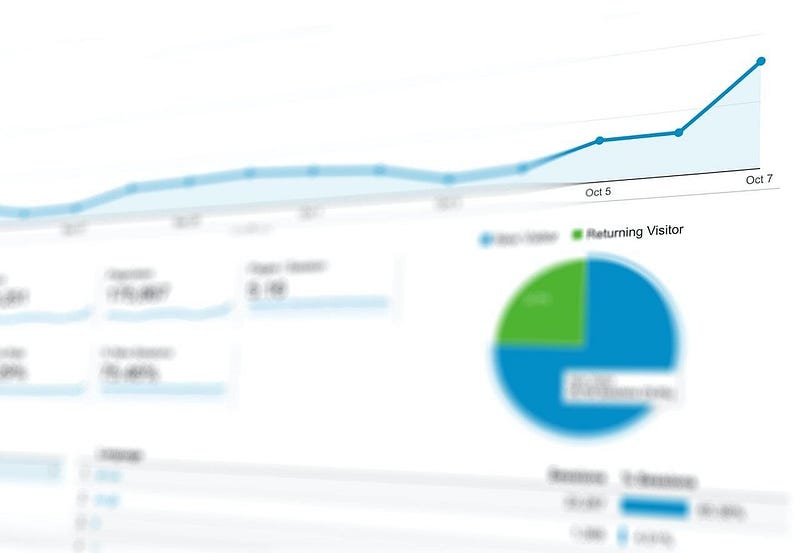Last Updated on September 1, 2023 by David
Guest Post by Jasmine Williams

The methods of SEO (Search Engine Optimization) and CRO (Conversion Rate Optimization) are two crucial resources to leverage in the digital age.
This is especially true with B2B eCommerce where you are often dealing with a lot of competition, high price points, and potentially numerous decision makers in your B2B clients’ organizations.
Whereas SEO brings passive, free traffic that allows you to grow your leads and online presence, it cannot do everything for you.
However, if you combine it with CRO, you can ensure that the traffic you are capturing gets converted at a higher rate — boosting your bottom line.
Therefore, in this article, we will discuss several tips to use both of these important online strategies for growing your B2B eCommerce business instead of letting your competition take a large market share. Let’s dive in!
Understand Your Market
You can use both SEO and CRO to understand your market better — their desires, the language they use, and what makes them tick.
Here are some tools to help you:
Keyword Planner
This free tool created by Google is invaluable to your SEO efforts. It helps you see what your target market is searching for. You can see which keywords have the highest volume.
For instance, you might want to create different content after discovering that “industrial lathe machines” has more keyword searches on Google than “lathe vendors”.
SEMRush
This is a paid tool, however, it goes further than Keyword Planner.
With SEMRush, you can almost spy on the competition and see estimates for their traffic numbers, as well as what keywords they are using and how much they are paying to acquire leads.
Customer Actions
Use your CRO data to see what customers are responding to. While they might click through to your website, you might find that you have some conversion aspects to clean up on your sales page.
Leverage Analytics
There is no excuse for not having an analytics platform integrated into your B2B eCommerce website in today’s day and age.

If you aren’t analyzing your data, you aren’t learning from your traffic and marketing — therefore, you are wasting your budget.
At a minimum, consider using the following analytics platforms.
Google Analytics
This is yet another free SEO tool that Google offers, and every B2B eCommerce company should be using it.
It allows you to see your traffic numbers from different sources — organic search, social media, direct searches, and more.
Google Analytics allows you to focus your efforts more strongly on the right methods to drive traffic.
Crazy Egg
This paid platform is a goldmine for sales and marketing. It allows you to test your website and see how visitors are acting.
It includes a feature called heat maps. This is a powerful graph that shows you where customers were moving their mouse on your site. It helps you understand what interstate your target market focuses on the most.
Analytics are concrete data sources that show you exactly what is working and not. If you ignore analytics, you can’t improve upon your online presence in the most productive way.
Create an Attractive Design
Long gone are the days where you could simply put up a basic webpage with web design “1.0” and expect to have the respect of your marketplace. Web technologies that make up websites have changed in the past few years.
Here are some modern design tips to use that help SEO and CRO work together:
- Simplicity. You don’t want too many elements on your page. Remember that your landing page is supposed to provide your clients with information and drive them to schedule meetings or sales calls, or even purchase, directly with one visit.
- Speed — The backend technology of your website should load your digital resources (such as Javascript) quickly. This makes the user experience faster and easier — leading to more conversions and less bounces (visitors leaving right away due to frustration).
- Sales Copy — There is no substitute for a great sales message. Make sure that you address pain points upfront and feature the types of benefits that your eCommerce product has to solve your B2B clients’ problems.
- Calls to Action — Don’t expect your visitors to know what to do on your website. Include direct, simple calls to action that tell your prospects how to purchase, find information, or contact your team.
To sum up, be straightforward in communicating your message to the clients and make sure your website is appealing, yet easy to navigate.
Test, Test, Test
Testing is the true mark of any B2B eCommerce business that takes their revenue seriously. Constantly testing your website allows you to gain the following benefits:
Lean Innovation
This is a concept borrowed from startups, who had no other choice but to innovate on their products quickly in order to match their market demand before funding dried up.
You can use this in your organization to iterate on products rapidly and scrap designs that don’t sell well.
A/B Testing
A/B testing involves creating two versions of each page on your site. Half of your traffic will be directed to version “A” and the other half to version “B”.
This way, you can see which headline, call to action, or other element needs to be adjusted to improve your CRO.
Create a Social Presence
Leveraging social networks helps with your online reputation and presence. Customers will discover you, understand what you’re about, and grow to trust your expertise.
Here are some social platforms to use toward this effort:
- Facebook and Instagram — With some of the largest user bases in the world, these two platforms can expose your brand to clients who otherwise might never have heard of you.
- Twitter — You can use the short form messaging on Twitter to drip product promotions, tease new releases, and drive clients to directly message your team.
- LinkedIn — Build authority by having a solid LinkedIn profile and writing weekly industry updates that add credibility to your B2B brand.
It can be a challenge to manage these multiple profiles. However, by using different B2B sales tools, you can make your team’s job easier and allow them to produce more effective results that filter down to your bottom line.
Integrate Omnichannel Strategies Into Your Website
Modern B2B marketing means that you need to use every channel available and integrate CRO and SEO to leverage them to the maximum effect.
Here are some tips for omnichannel strategies.
Organic
Use social and search engine marketing to drive free traffic online. Let your CRO efforts take it from there, optimizing the traffic that you generate.
Paid
Local businesses, in particular, can benefit from paid local marketing.
When someone is near you, your business will show up before others on the map. This positions you before your competitors to get initial traffic at a higher rate.
Conclusion
If you are running a B2B eCommerce business, you are already facing competition from around the globe. The last thing you want is to fall behind because you aren’t using the online tools available to you in the right way.
Whereas SEO can help you increase your presence in a general way and generate traffic to your website, CRO can help you optimize this traffic and convert it into actual leads and sales.
Combining them will grow your revenue to increase salaries, shareholder earnings, equity, and company profitability.
So review the tips above. Then, select one or two to start with and implement a strategy to combine your SEO and CRO efforts, so they feed into each other, creating an online sales and marketing machine that is unmatched in your industry.
About Re:amaze
Re:amaze is a modern helpdesk and customer messaging platform designed to help eCommerce businesses boost customer happiness and revenue. Re:amaze allows all customer-oriented teams to work together in a shared inbox through email, social, SMS, voice, and live chat. Re:amaze also comes packaged with automated messaging and chatbots so eCommerce brands can succeed at the front lines of conversational commerce.
About Jasmine
Jasmine Williams covers the good and the bad of today’s business and marketing. When she’s not being all serious and busy, she’s usually hunched over a book or dancing in the kitchen, trying hard to maintain rhythm, and delivering some fine cooking (her family says so). Contact her @JazzyWilliams88
